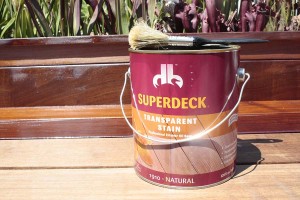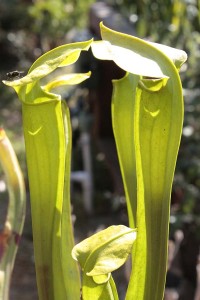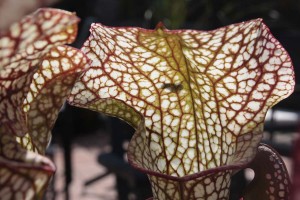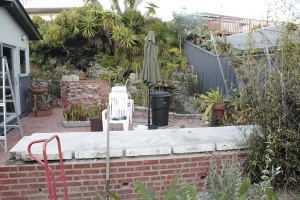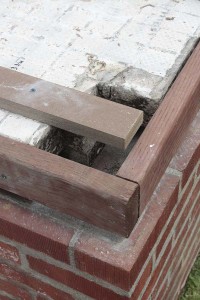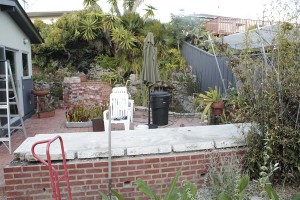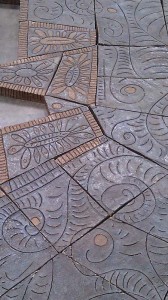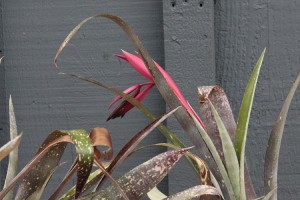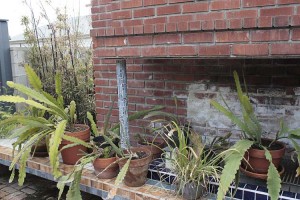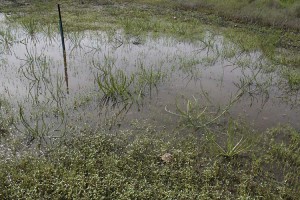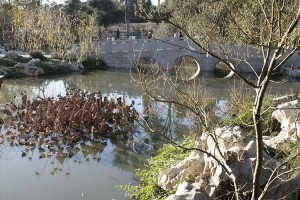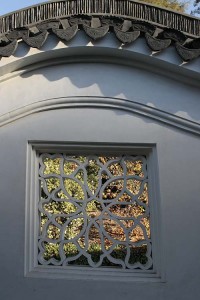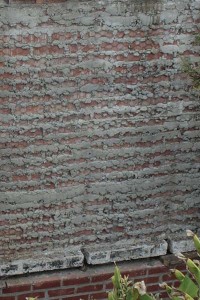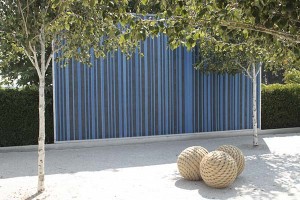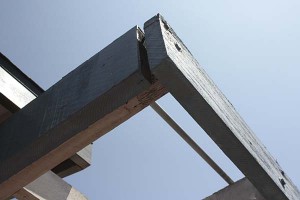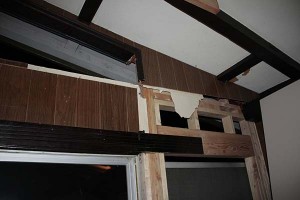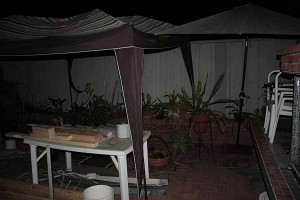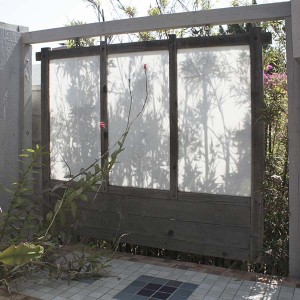No garden project seems to ever be complete, but we did put the finish on the bog bench we’ve spent a lot of time working on.
We used this stuff, Superdeck. It took already good-looking wood and turned it into something almost like a nice finish on furniture. Over the last few years we’ve tried various ways to finish ipe used outdoors and this stuff seems to give it the most durable and attractive finish. They haven’t paid me a cent to say this. I like the stuff.
Twenty feet from the bog bench Stapelia gettleffii has opened its first flowers of the season. I’ve mentioned before how this plant is one of an informal group of carrion-scented plants that are pollinated by flies.
Back at the bog bench this Sarracenia alata, veinless form, is having a hard time hiding the fact that it’s had a lot of bugs–most of them flies–as meals this season. Just look at how the pitchers suddenly turn dark as you go down the tube. Dead bugs inside. Lots of them.
Midsummer’s edible highlight is the ripening of the figs, and this one is about thirty, forty feet from the bog bench..
One of the annoying nemeses of fig growers is this shiny little guy below, the fig beetle. It has the unpleasant habit of breaking the fig’s skin and then feeding off the succulence inside. I can’t say that I blame them, but I want the figs all to myself.
For some reason they seem captivated with this one plant in the bog, the “green” form of Sarracenia leucophylla, a form that lacks the ability to make the reddish anthocyanin pigments. I’ve noticed that the pitchers of this plant have a distinct damask-rose aroma. Maybe the scent reminds the beetles of the floral notes of figs?
Whatever the case, at least one of the beetles got a little too interested in this pitcher and fell in. It was gruesome to watch as it tried to fight its way back out of the pitcher, struggling so hard it kicked a big hole in the side of this tube. It took at least three days to die.
There’s a certain streak in many carnivorous plant aficionados that seems to delight in the bug killing aspect of these plants. I’m not one of them. My father spent much of his life as a Buddhist, and I’m sure some of its tenets of non-violence against the universe rubbed off on me. I found it unsettling to walk by the pitcher and watch this happening. A slow death by starvation and dehydration, head-down into a pile of dead bugs–not the way I want to leave this earth.
So I put on my rosy goggles of denial and look at the plants in the bog. This is one of the more spectacular ones right now, named ‘W.C.,’ it’s a polygamous hybrid involving S. leucophylla, S. rubra and S. psittacina.
Still, I’m reminded of the oblivious pet-owner’s line: “He’s a cute puppy isn’t he? Why, no, it doesn’t bite.”
Yah right. Pretty, evil things…


